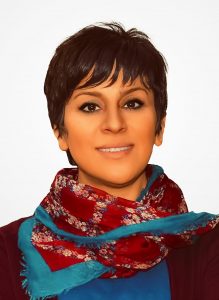Home
Welcome to the website for Yalda Saadat
 Yalda Saadat is currently a Postdoc in the Engineering lab at the National Institute of Standards and Technology (NIST) and a recipient of the National Research Council (NRC) Grant. She received her Ph.D. in the civil engineering department working in Dr. Ayyub’s Center of Technology and Systems Management at the University of Maryland, College Park, and was a professional research experience program fellow at the National Institute of Standard and Technology (NIST). Also, she was a future faculty program fellow at the University of Maryland, College Park. Yalda received two master’s degrees in civil engineering and mechanical engineering while working in Dr. Ghorbani’s renewable energy design lab at the University of Hawaii at Manoa. She received her B.S. in civil engineering at Razi University in Iran.
Yalda Saadat is currently a Postdoc in the Engineering lab at the National Institute of Standards and Technology (NIST) and a recipient of the National Research Council (NRC) Grant. She received her Ph.D. in the civil engineering department working in Dr. Ayyub’s Center of Technology and Systems Management at the University of Maryland, College Park, and was a professional research experience program fellow at the National Institute of Standard and Technology (NIST). Also, she was a future faculty program fellow at the University of Maryland, College Park. Yalda received two master’s degrees in civil engineering and mechanical engineering while working in Dr. Ghorbani’s renewable energy design lab at the University of Hawaii at Manoa. She received her B.S. in civil engineering at Razi University in Iran.
Yalda’s work focuses on the resilience of smart and connected communities and sustainable infrastructures with a systematic approach, along with the resilience of the supply chain in the event of natural disasters. In a broader sense, she works on quantifying network resilience. She employs various fields of science to model infrastructure networks, measure vulnerabilities, and develop resilience metrics. For more information about Yalda and a full CV please email: yaldas@umd.edu
Philosophy Statement
My enthusiasm for urban settings — their infrastructures, their interconnected communities and the people surrounded by their shape and structures — began amongst the vital streets of Tehran, Istanbul, ancient Roma, on the teeming subways of Paris and London, within the tranquility of Geneva’s Alp foothills, on the peaceful coastal cities near the Pacific Ocean, and within the crowd in downtown New York rushing past the lofty skyscrapers in an attempt to get themselves to their places of work.
Today more than half of the world’s population lives in urban areas, enjoying the ecstasy of city life while struggling with its discontents. Cities are the winners of the twenty-first century; however, they also carry the paradigm of urbanity challenges. These challenges cannot be solved by relying on just one discipline. How can we construct buildings, bridges, and railways without paying attention to the economic aspects of them? How can we address transportation challenges while ignoring human behaviors and individual choices? How can we make our infrastructures resilient and sustainable while denying their interconnectedness? While not considering future changes? What about if looming environmental changes in the next fifty years look far less bright? How should those changes be factored in? Are we able to predict them in order to protect the environment and urban areas?
I believe that systematic thinking and trans-interdisciplinary work empower us to understand the aforementioned challenges better. If we perceive cities and their contents as complex systems, it sets the stage to use various fields and cross the borders of multiple disciplines to find innovative ways to meet the needs that our cities present to our generations. Eventually, we will make cities more livable, resilient and sustainable for generations to come.
Taking all this into consideration during my research, I have combined complex network theory, engineering systems, agent-based modeling, the social and psychological aspects of our cities, and the joyful probability assessment to model part of these challenges and acquire a better understanding of how to rectify them.
No Comments